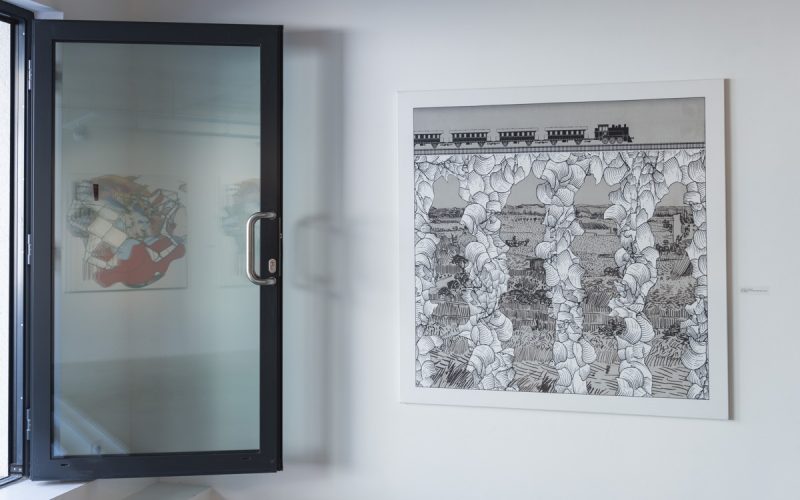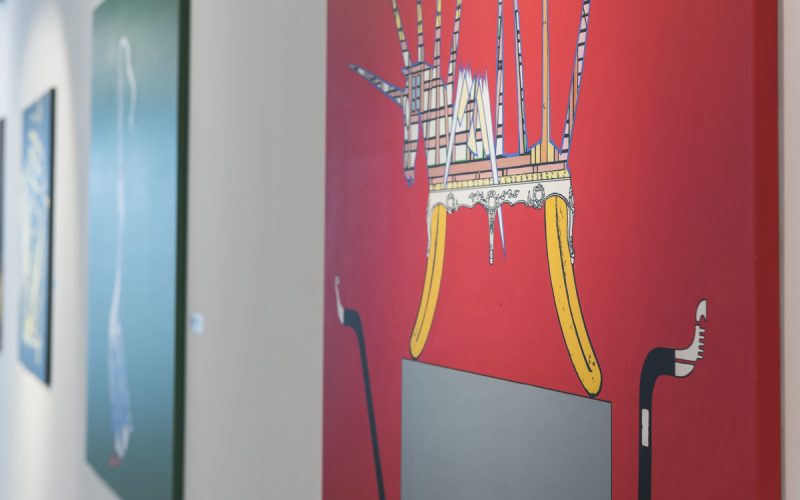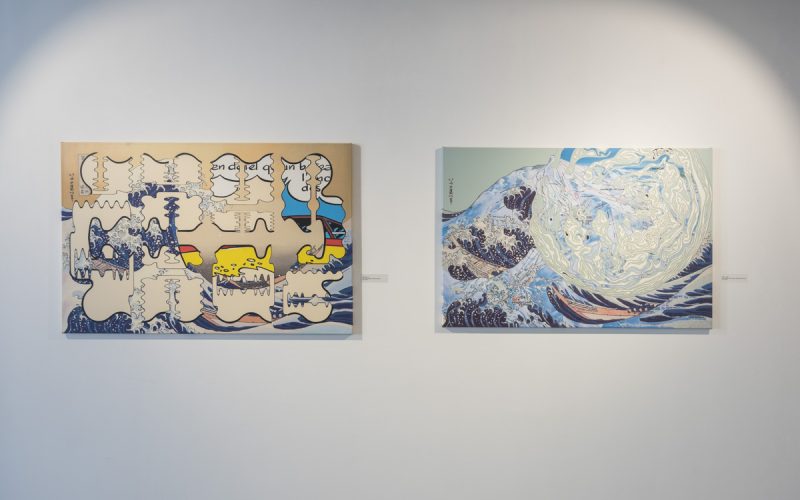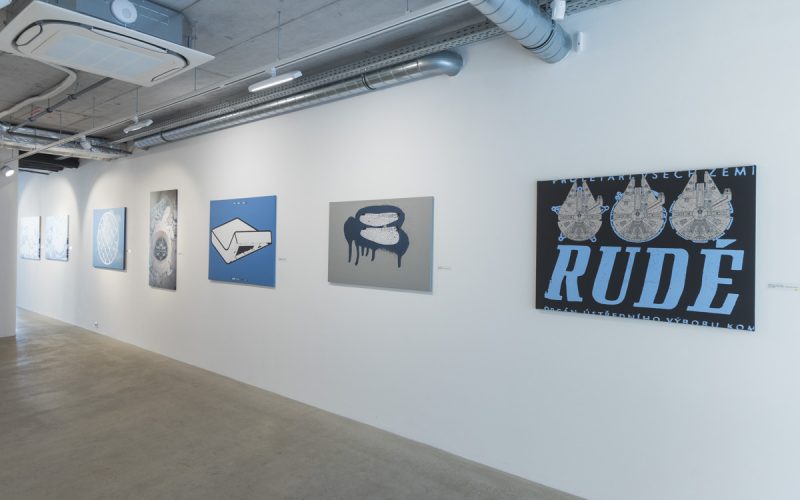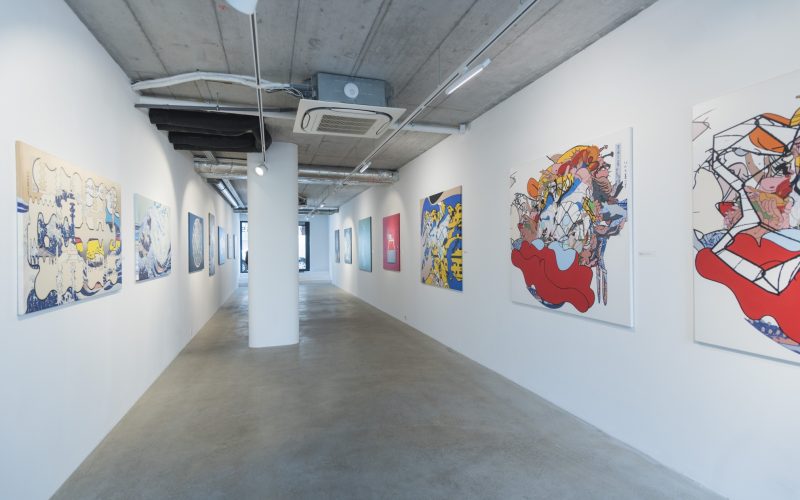17 MAY - 07 JUL 2017
MARKO BLAŽO
Taking account of his works, predominantly a painter, as a being, primarily a “drawer” and inventor, Marko Blažo had his debut in the post-Velvet Revolution 1990s, at a time that was young-art friendly. Barely a student in the “self-grown” Open Studio of Rudo Sikora, he was a star of the Soros “rookie camps”, author of several iconic works of the decade.
An imaginary world of Marko Blažo is as if out of reality. Things work to their own, alternative rules and the conventions and “rules of the game” are violated, the playing field lines are exceeded, functional links, time and space inter-connections and causal series are arbitrarily turned head-down. Inanimate objects are animated, living creatures turn into things. Blažo paints and animates (as if for himself alone) his autonomous world in pictures similar to comics. Perceived by theory scientists and also self-defined as a big, old or eternal child who “plays” and “inhabits” the world of his own with what he likes: imaginary architecture and “incarnated cultural monuments”, mythological animals, nostalgic characters from one’s childhood or boyhood land. Other sources of inspiration include history of art, well exploited, like a bottom-less well of motifs, applying the principle copy left and used for more morphing. Producing art is obviously a pleasant activity to Marko Blažo and his pictures alone are viewer-portable footprint’s of the artist’s joy of creative activities. Continuity and variability of motifs are typical of Blažo’s life-long working style. Certain motifs (such as trains, cathedrals, pyramids and sphinxes, houses with heart-shaped roofs, churches with elastic necks, razor blades, two-wing aircraft, art nouveau animals including dragon flies, butterflies, swans and unicorns and more) have a long breath. They come to the surface on an ongoing basis and always with new associations, revitalized under the effects of new impulses. Especially the older ones, seemingly phased-out motifs reappear in Marko’s new works, having gone through the most unusual, at times almost drastic, rebirth. They are varied: multiplied or, to the contrary, fragmented, cloned in all kinds of ways, morphed, mangled, scrapped and literally bulldozed.
Blažo’s paintings ever more often feature various “abject” (slimy, repulsive) liquid and plasmatic shapes and motifs. The artist works with them on his computer like with plasticine and “pacifies” the resulting shape in a composition against a neutral background of the colored surface of the picture. He chooses essentially central compositions, standard “couch” formats, and frames them with his “designer” sense of decor. This way he sublimates his “demons” and turns them into beautiful pictures.
Interpreters of Blažo’s pictures have to be cautious, though, and avoid too much psychoanalysis. As a matter of fact, not all trains in cycles are an expression of unfulfilled sexual desire, not all double winged planes represent fear of flying and not all amorphous sofas are a chthonic impulse. Even though certain of Blažo’s compositions feature more personal motifs, his art is not intrinsically autobiographic. And actually conceptualistic either. Often there are plain visual art associations, formal games where the meaning may and may not play a role. Or, to put it this way: where one is arguing the other, the forms with the content, and the poetry is born out of the situation, when the above cannot manage “to catch up” with one another.
Petra Hanáková
Turtle
2010, print on canvas, 125 x 70 cm
Reservation
2016, print on canvas, 120 x 90 cm
2016, print on canvas, 90 x 120 cm
Map
2013, print on canvas, 80 x 120 cm
2016, print on canvas, 90 x 120 cm
2016, print on canvas, 70 x 110 cm
Bathing Monument
2017, acrylic on canvas, 110 x 110 cm
Mistress Teacher
2017, acrylic on canvas, 135 x 135 cm
2007, acrylic on canvas, 135 x 200 cm
2011, acrylic on canvas, 85 x 130 cm
Hermit
2017, acrylic on canvas, 110 x 110 cm
2017, acrylic on canvas, 135 x 135 cm
Rococo
2017, acrylic on canvas, 110 x 110 cm
Viaduct
2014, print na plátne, 145 x 145 cm
2000/2015, print on canvas, 90 x 120 cm

